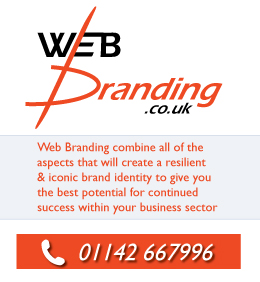Marcus Aurelius (Roman emperor, best known for his Meditations on Stoic philosophy, AD 121-180)
A well organised article in a magazine or paper will deliver a much more understandable message than a poorly laid out area of text. Even if the content is written in perfect English and makes for marvellous and entertaining prose, bad layout will generally be the reason for the perfect article to go un-noticed.
The same is true for website design and structure.
Is this not obvious? Apparently not!
It would not take anyone long to stumble upon a deceptively highly regarded website that lacks even the basic structure and layout that its content deserves. Now why is this? Surely the vast amount of these websites out there want to project themselves in the best possible light and ensure the maximum amount of people read and absorb what their websites offer.
Many websites of today are forgetting the fundamentals that make an appealing, engaging and interesting website.
The following fundamental rules of design will ensure your website works well for you and for you users:
1. First Impressions
It is common knowledge that the majority of internet users will quickly scan websites.
Our brains will make a snap decision regarding visual appeal, content, structure and relevance. If the first impression is lacking the rest of the site becomes instantly redundant. A click on the ‘back’ button and the potential powerful content within your website is lost to another visitor.
In an online world where choice is unending, the FIRST IMPRESSION has never been so important.
Visual appeal is an important factor of the first impression. We as humans will tend to look for similar colours, shapes and structures. Through the information gained our brain will instantly have calculated areas of viewing importance. In the western world we all read from left to right which is also a similar ingrained habit of the brain. Google heatmaps look into the most popular areas viewed on websites. Worth a look for any further reading.
As important as a good first impression is, another point to consider is where are your areas of importance laid out on your website? This is a vital question to ask within the design stage of a website.
2. User Interface
The great benefit websites have over books, magazines and newspapers is of course the power of physically engaging the audience. This trend is ever growing, from Apple iPhone apps to facebook groups. The power of USER INTERFACE must not be underestimated.
The more a user can experience, learn, engage and feel part of a website the more successful and appealing the website will be. Features such as polls, comment boxes, video tutorials, links and online games are just a handful of the vast collection of user interface applications to help hold your potential audience.
3. Organised Content
The human brain constantly looks for patterns and similarities, and will often fill in the gaps subconsciously. For example when reading ‘tihs slcetieon fo wrods’ although all words are wrong the brain can quickly make sense of it as ‘this selection of words’.
Like a highly tuned and efficient computer, our brains are constantly assessing information around us, categorising it into levels of appeal, importance and relevance.
Small sections of key information will allow your users’ brains to work at a more efficient level and draw from your website the desired information or outcome. A good example of this is the ‘mind map’, a tree like formation linking up relevant information. This is how neurone pathways link up in the human brain.
Try and link up important information within your website design using this theory via illustrative graphics that will guide the viewer’s eye.
A good balance of features is also important. Ensure the websites content is not all text, if a large amount is required try to break it up using images and graphics. The use of bold, italics and different coloured text is also a useful tool as the viewer’s brain will instantly be able to determine a difference.
Final Thought
Spending the extra time over these points covered earlier will set up your website for popularity and success.















